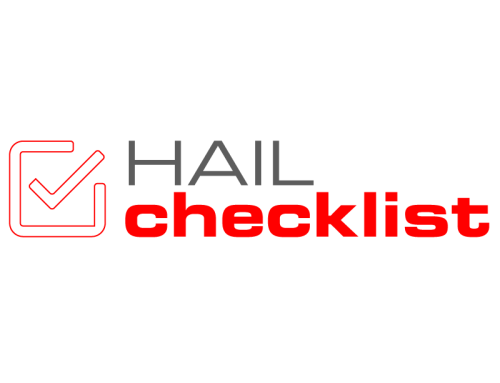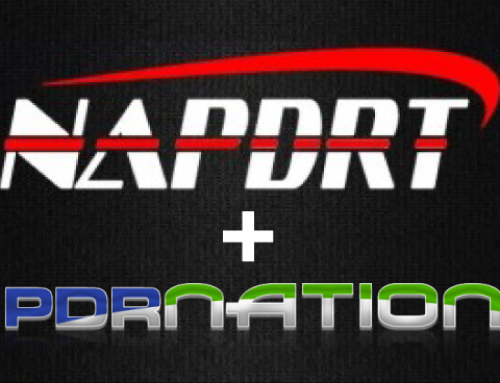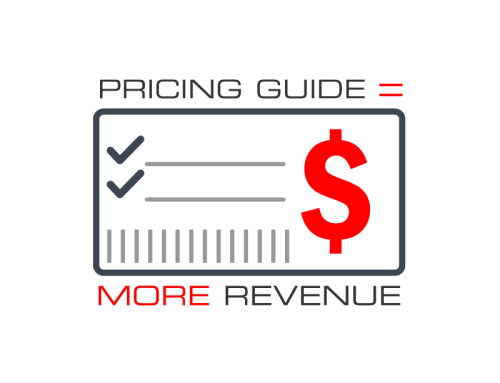with Dan Ontrop, Dan O Dents, (Celina, Ohio USA)
 Finally old man winter is starting to lose steam. The days are getting longer, grass is getting greener, and temperatures are rising. These days are filled with anticipation for a PDR technician. Spring thunderstorms are right around the corner, which are poised to bring severe weather. All around the PDR world hail technicians are predicting the time and location of the first catastrophic storm of the year. Their bags are packed, tools are fine tuned, and The Weather Channel is streaming on every device in the house. Now we all sit and wait for that first I-Damage report. Then, after months of the waiting game, it’s time. The question is: Are you ready?
Finally old man winter is starting to lose steam. The days are getting longer, grass is getting greener, and temperatures are rising. These days are filled with anticipation for a PDR technician. Spring thunderstorms are right around the corner, which are poised to bring severe weather. All around the PDR world hail technicians are predicting the time and location of the first catastrophic storm of the year. Their bags are packed, tools are fine tuned, and The Weather Channel is streaming on every device in the house. Now we all sit and wait for that first I-Damage report. Then, after months of the waiting game, it’s time. The question is: Are you ready?
Unfortunately for many local PDR companies the honest answer to that question is no. This causes local markets every year to be ransacked by outside vendors only to leave the market crippled for years to come. Many times you are left to pick up the pieces after the storm. You end up repairing under bid stragglers and subpar work that are many times left behind. Also, the reputation of the PDR industry suffers due to severe competition, which likely leads to lower prices and quality. There are several methods to capitalize from a hail storm in your market, but you must be ready! I will discuss several of the techniques I use in hopes to help you, as a local PDR company, own your market.
In my opinion, the most critical step to owning your region is pre marketing.
This is crucial! I know how important this step is, but I still struggle with it every year. As a hail chaser, the off season is precious for my family and me. It is easy to go into hibernation after pushing that last dent for the year (especially if it was lucrative), but you can’t. Pre marketing will pave the way for the upcoming season in the event of a hail storm. Personally, marketing usually starts late winter. I make it a point to visit my accounts every year. Due to my location in rural west central Ohio, this takes time and money, but I feel the potential reward is worth it. Before I was a full time hail chaser, I would pre market a one hour radius from my hometown. I still continue this method today and have seen great success. When pre marketing your area, be professional. Wear your company uniform, have logos visible, and be ready to engage in conversation. Always present your company matrix, references, proof of insurance, contracts, business cards and folders. If the owner or your contact is busy operating business, schedule a return visit. It may be hard to swallow that two hour round trip again, but it will show you are reliable. The bottom line is sell yourself like that account is going to get hit with hail every year, because when it does you want to be their go to repair company. Pre marketing will pay off if done properly.
I am now going to assume after you killed it pre marketing in your area mother nature has blessed you with a hail storm. Now the work begins. First thing I want you to do is look into a mirror and ask yourself, “Can I perform a quality repair on this damage?” Be honest.
All hail storms are not created equal and damage varies. Know your limitations and plan accordingly.
As a local PDR company this is your chance to capitalize on your pre marketing and solidify your reputation. I do not advise any technician to perform subpar repairs. It could cost you much more in the end. Realize from the get go that you may need to employ subcontracted labor to keep up with the demand of your customers. You can not be at every account the day after the storm, but I promise you that several other dent companies and technicians will be knocking on their doors. This is one of the biggest mistakes made by local PDR companies. As much as you would love to repair every car in your market, it will not happen. Accept this fact in the beginning and put your focus on what was acquired from pre marketing. During a catastrophic hail storm, you need to have an experienced hail technician in every shop ASAP. Cars will be rolling in on day one. Protect your best accounts personally and fill in the gaps with the best technicians you can acquire. Your accounts will be under continuous fire from out of town companies. So be sharp. At this point in the game if you make a mistake it could cost you thousands of dollars.
This brings us to the biggest issue of every hail storm: How do I get all these vehicles repaired? You need to make a decision quickly on how the storm will be managed.
- Manage the storm yourself
- Hire an outside hail management company
First, let’s discuss the scenario of managing the storm yourself. As a local PDR company you most likely have wholesale and retail accounts that you service on a weekly basis. You have to continually service these accounts during a hail storm. If you decide to solely focus on hail it will put a strain on your relationship with your other accounts. In most cases, this results in hurt feelings and the loss of those accounts. Realize as a local PDR company these accounts produce revenue annually. When the hail ends, which it will, these accounts are your livelihood. I would recommend that you strive to end a hail storm with more accounts than you had prior to the storm. This will happen if managed correctly. However, do not take on more than you can handle and follow through with all promises made. Compile a list of trustworthy hail technicians before hail season to have on retainer in case you need assistance. Let technicians know what will be expected of them as a sub contractor and the percentages that will be paid for their services.
Remember, if you want the best technicians you need to pay a fair percentage.
Everyone has different expectations when it comes to percentages and it varies, but all I can tell you is do not be greedy. It is better to pay a technician a fair percentage to ensure that the vehicles receive quality repairs rather than losing the account completely. During a catastrophic hail storm there is plenty of money to go around if done correctly. Discuss with each technician individually the invoicing process and pay schedule. I strive to pay sub contractors every two weeks for their services. I always run an open book policy with technicians. This means all information to which I have access in a storm is shared with him or her, including insurance repair cost per vehicle. If this is done there are no secrets and everyone works as a team. Managing a hail storm is not for the faint of heart. I guarantee that mistakes will be made and these will be expensive learning curves. You can count on elevated stress levels, sleep deprivation, constant phones calls, and strain on the family and marriage. No matter what you do someone will not be happy. It will be a very challenging few months, but if done right will also be very rewarding and lucrative.
Now let’s talk about the second scenario of hiring an outside hail company. For many local PDR companies I do feel this is the best option. To do this correctly I would advise making this a part of your pre marketing step. It is always better to have conversations with a hail company prior to a catastrophic hail storm and have them on retainer. This will ensure you will both be on the same page and can hit the ground running. Just remember that you are hiring the professionals that see and manage hail daily. Although it can be difficult, this is the time to step back and let the sub contracted hail company do the job you have hired them to do. This does not mean you follow everything they say, but realize they have your best interest in mind. Again, percentages paid to a subcontracted hail company will vary but be fair. This gives you the opportunity to continually service all your weekly accounts and make sure all your accounts are satisfied. Then after all other business obligations are met, pick up the hail rod and burn the midnight oil. Or, if the damage is out your comfort zone, use this opportunity to improve your skills with the support of the technicians you are employing. There will be hail in the area for a year to come. One of many benefits of hiring an outside hail company is they will provide an experienced crew of hail technicians that work well with each other. When trying to manage a storm yourself if can be difficult in busy years to find quality technicians. Also you will have to make multiple phone calls to recruit technicians that you may or may not know. This can cause multiple issues such as quality, trustworthiness, and professionalism. Time is money in the business, and the faster you have technicians working the more cars you will repair. Also, by having a outside hail company staff all of your accounts you will retain a higher percentage of your market and continue to service those accounts for years to come. Another factor to remember is most hail technicians will put in elevated work hours that are not possible for you. We as hail chasers have a narrow window to make our yearly income and are away from family and friends. When I am on the road I will work as many hours as possible, sometimes pushing 16 hour days. This is likely not an option for you as a local hail company due to all the demands with family commitments. If you are looking to still balance everyday life during a catastrophic hail storm this would be the best option for you. Now is the time to work with a outside hail company and reap the rewards of servicing and pre marketing your market. Make sure you do your homework on any outside hail company because your reputation is on the line.
From this point on I am assuming you have decided to manage your local hail storm. I feel the most important decision to make during the entire storm is who your sub contracted technicians will be. We touched on a few things earlier but will go into little further depth. Most likely the first report of confirmed damage in your market will cause dozen of technicians to contact you through Facebook, email, or phone. Some you may know but most you will not. So how do you chose who to sub contract?
The most important qualifications for me are references.
I want to know who the technician has worked for in the past and speak with references to make sure his/her credentials are accurate. Also if that technician has worked along side a respected technician that I know I will trust his evaluation of his or her skills. Certifications are also important to me. I love to see that a technician has taken the time necessary to prove his or her skill to their peers. Two visual certifications that I believe in are Vale and PDR Nation. I realize that some techs discredit certifications, but it proves to me that you can indeed finish a dent to a satisfactory level. When you are trying to separate technician’s skill level, the ones that have these certifications trump the ones without them. Fair or not, I feel that if a technician puts in the effort of getting certified they will put in their best effort for me as a sub contractor. If the technician can prove their skills through references and/or certifications, the only thing left is proof of insurance and workman’s compensation (when applicable). These days a certification of insurance is a must. It will protect you in the event of unforeseen accidents. It is a good idea to have everything documented before any work is done. If they pass all those tests I will let a technician prove to me they can do the job at hand. Every technician must be able to pass quality certification to my liking.
Remember that your company name is on every repair. Make sure if you are unhappy with any repairs that it is voiced immediately.
It is always better to address an issue sooner than later. If percentages are fair and QC is an issue, replace the technician, because it will cost you in the end. Again remember that if you want the best technicians to produce the best repairs, pay must be fair. You are the only one to blame if wages are unfair and you are expecting perfection. Also do not expect technicians to produce flawless work if you yourself are producing sub par repairs next to them. It is your responsibility to set an example of the quality you are expecting.
This leads us into the question of what are fair wages and how do you bid the damage? In my opinion fair wages are not a daily, weekly, or monthly number. All technicians have different skill levels and goals. This industry is based on percentages. Some try to manipulate the numbers to make their deal sound better than it really is, charge hidden fees for numerous reasons, or keep unfair percentages as long as they can find someone to work the deal. There is a word for this: greed. The numbers will constantly change and technicians will come and go. We all have heard, or worse yet worked, one of these deals.
As a local PDR company I advise you to state the facts of the deal in the very beginning. Be honest and stick to your word.
If everything is discussed with the sub contracted technician and he or she agrees to work the deal, this is a fair wage in his or her eyes. If not, they will let you know and you can discuss the issues. It is also your responsibility to estimate vehicles correctly. In a body shop this means maximizing the matrix, and at a dealership this means presenting a fair bid. There are several training videos by various people and organizations to educate you on how to properly write a hail estimate. If you have never had experience estimating hail I strongly encourage you to use these resources to your benefit. When estimating hail damaged vehicles always use proper lighting indoors. I use a company hail matrix that I created with my repair cost numbers. If you do not have your own company matrix you will be forced into using the insurance companies matrix, which is always decreasing in cost.
The biggest problem I see every year on the hail trail is the severely underbid dealership deals.
Again this goes back to pre marketing. I have several dealerships on a retainer program contract in the event of a catastrophic hail storm. It states repair percentages and payment schedules for all repairs completed. The contracts are all signed, filed, and binding for the calendar year. I have never bid a dealership on a per unit price. Instead it is all percentage based just like a body shop would be. I explain that we are the local company and have the best interest in all parties involved. Explain that you will not be the cheapest because of quality repairs performed by fairly compensated hail technicians. If they want to go with the cheapest bid do not even waste your time marketing to them. You will not want the headaches that are involved with a lowballed deal, especially being the local company. My wholesale deals are ran the same way as retail. All paperwork is open book and I pay subcontracted technicians a percentage of the total ticket. This allows you the opportunity to bring in sub contracted technicians and pay them a fair wage while receiving the highest QC standards. Many local PDR companies service dealerships on a weekly basis so why not when it hails too? It is your market, protect it.
Now it is time to talk about how to maximize repair cost. If you have never been part of a catastrophic hail storm you will be amazed at how grossly underestimated hail damage is written by insurance companies intentionally. If you are managing a body shop, advise the owner/manager about the supplement process. From my experience almost every vehicle needs a supplement so don’t be afraid to ask for one. Insurance companies expect it. The process will differ whether you are in a DRP (Direct Repair Program) shop or a non DRP shop. If you are in a DRP shop you may be forced to use a specific insurance matrix. If so, maximize their matrix counting all oversized dents and all 25% up charges with R&I. Do not cut them a break on anything. I assure you they are not cutting you any breaks. Remember that you are a sub contracted vendor and are not required to abide to the DRP guidelines set forth between the body shop and the insurance provider. More times than not you will have to tread lightly with insurance adjustors when in a DRP shop. Be courteous to insurance adjustors and perform quality repairs and there are usually no issues. Remember that you may lose a few dollars here and there but the volume of a DRP shop will offset it. When working in a DRP shop you need to remember the big picture. Non DRP shops are a different story. You are in control and can dictate a fair repair cost. This is when it is crucial to have a company matrix. You can show an insurance adjustor that you are the local PDR company and these are the standard area prices. I always offer a copy of my matrix to every insurance adjustor and more times than not they have no problems. Again be courteous but you can be a little more aggressive in a non DRP shop. You are the expert, not them. Present yourself this way and you will be amazed at the success. In both situations write the damage that is present. Do not ghost panel or exaggerate dent size or count. Be honest from the get go and a couple of weeks into the storm you will not have to wait on many supplements. You will gain the respect of the insurance adjustors and the next few months will be very lucrative.
My hope for this article is to help you as a local PDR company capitalize on a hail storm in your market. It is my belief that the more markets that are serviced by local PDR companies the better off it is for our industry. The revenue brought into these local PDR companies will allow them to compete with larger corporations and protect their region during catastrophic hail storms. It will keep prices up and allow hail chasers the ability to work for local PDR companies at a fair percentage. So I am going to ask you the question again: your local accounts just received hail damage, are you ready?
If you have questions about anything in this article feel free to contact me anytime at 419-953-5127 or danodents@gmail.com. I would love the opportunity to assist you with your local hail storm. Remember it is your market, protect it!





